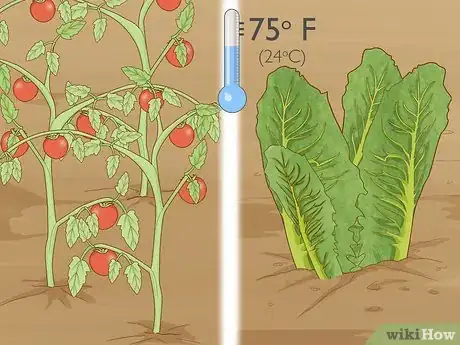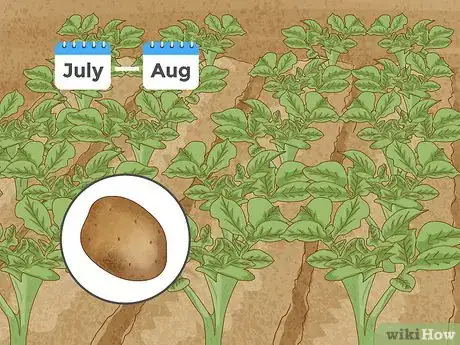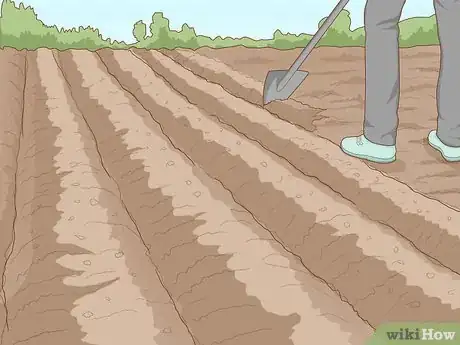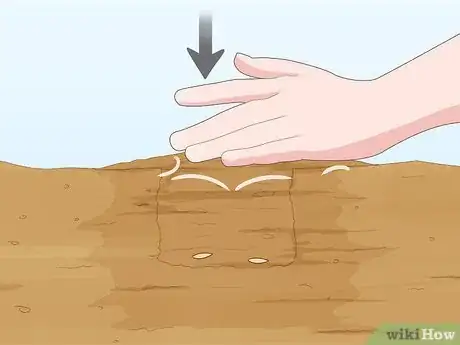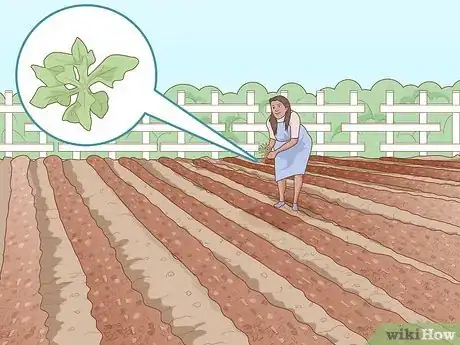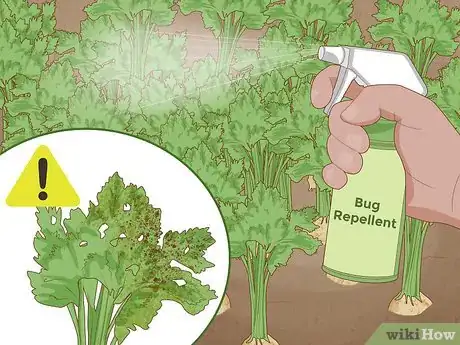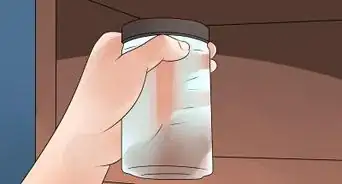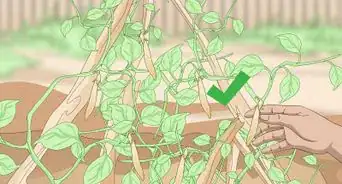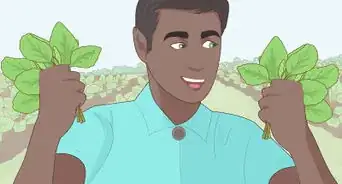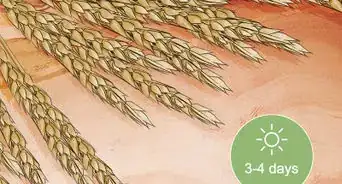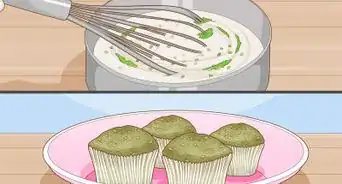This article was co-authored by wikiHow staff writer, Hannah Madden. Hannah Madden is a writer, editor, and artist currently living in Portland, Oregon. In 2018, she graduated from Portland State University with a B.S. in Environmental Studies. Hannah enjoys writing articles about conservation, sustainability, and eco-friendly products. When she isn’t writing, you can find Hannah working on hand embroidery projects and listening to music.
There are 14 references cited in this article, which can be found at the bottom of the page.
wikiHow marks an article as reader-approved once it receives enough positive feedback. This article received 16 testimonials and 90% of readers who voted found it helpful, earning it our reader-approved status.
This article has been viewed 516,771 times.
Learn more...
For all of human history, people have managed to feed themselves, either by fishing, hunting, gathering, or subsistence farming. Nowadays, we can simply head to the grocery store to buy our meals. However, growing your own food is both rewarding and money-saving. If you’d like to grow your own food, make sure you research the climate in your region, create rows for your crops, and harvest when your food is ripe to enjoy the food from your garden.
Steps
Growing Food in Your Climate
-
1Grow most leafy greens and vegetables during a warm summer. If you have temperatures above 75 °F (24 °C) during the summer, plant your vegetable crops in May or June. Make sure they are planted after the threat of frost is over.[1]
- Lettuce, cabbage, kale, and tomatoes are all great options to plant in the summer.
Tip: Legumes do well in a temperate rainforest and are a great source of protein.
-
2Plant fruit in the early spring in a moderate climate. Most fruit, like apples, oranges, lemons, and limes can be grown on trees in a 12,000 square feet (1,100 m2) area. Start with planting a fruit tree in a pot to monitor the soil and water intake, and then transfer it to the ground after 1 year during the early spring. Most fruit trees will not start bearing fruit until they are 2 to 3 years old.[2]
- Vine fruits, like grapes, can be grown anywhere with a trellis that they can climb.
Advertisement -
3Grow winter grains in a cold, wet climate. If you live in an area that gets below freezing and has a lot of precipitation, plant grains like rye. Rye is able to withstand the cold temperatures and the heavy rainfall that will happen in many areas of the world. Plant your rye in the early fall before the first frost hits.[3]
- Winter grains will usually give a higher crop yield than summer grains.
-
4Farm summer grains in a warm, moderate climate. Summer grains, like corn, do best during warm weather. If your summers get hot, plant corn in May or June and let it grow over the summer months. Corn does especially well in the midwest area of the United States.[4]
- Rice needs a tropical climate to grow. Southeast Asia is the best climate for rice crops.
-
5Let root vegetables mature during the fall. Potatoes, beets, radishes, and other vegetables that grow underground prefer to grow during the colder months. Plant root vegetables in July or August to prepare for a fall harvest. You can grow these even if the threat of frost is near, since they are hearty enough to withstand it.[5]
Planting Crops
-
1Make sure your soil pH is between 5.5 and 7.0. Test the pH of your soil by using a test probe or paper strips to determine the acidity or alkalinity of your soil. Most food grows at a pH of 5.5 and 7.0. If your soil is below 5.5, add dolomite, a type of crushed mineral, to make it more basic. If it is higher than 7.0, use pine needles or peat moss to make it more acidic.[6]
- You can find a test probe or strips at most garden stores.
- You can buy dolomite at most garden stores.
-
2Break the ground with a plow or a tiller. Clear away any large stones, roots and limbs, heavy accumulation of vegetation, and other debris before tilling. Use a rototiller or a plow to disrupt your soil and turn over the top layer. This will make the nutrients in your soil more readily available and allow the top layer of soil to refresh itself.[7]
- To sustain a 4-person family, use 12,000 square feet (1,100 m2) of land to grow vegetables and grains.[8]
Tip: On a small plot of land, you can use a pick, shovel, and hoe to till your land instead.
-
3Lay rows with a hoe or a plow. Mark out the area you intend to plant. Use a hoe or plow to create a slightly raised bed in the loose soil in a line across the length of the plot. Next, make a shallow groove cut in the soil with your rototiller and a furrow attachment. Do this until your growing area is covered in rows.[9]
- You can rent rototillers and their attachments at many hardware stores.
-
4Place your seeds in the furrows at the depth they require. The depth of planting may vary according to your choice of plants. Check on the back of your seed packet to find out the best depth for your plant. Make a small hole with your fingers and place 2 to 3 seeds in each hole.[10]
- Plants like legumes and melons, squash, cucumbers are planted between 3⁄4 inch (1.9 cm) and 1 inch (2.5 cm) deep, and corn and potatoes may be planted 2.5 inches (6.4 cm) to 3.5 inches (8.9 cm) deep.
- You can also start seeds indoors and transplant them after they have sprouted.
-
5Cover the seeds in soil and gently pack down the dirt. This will prevent the seed bed from drying out in the sun. Use the palm of your hand to press down on top of the seeds you planted. Make sure they are covered all the way so they don’t get eaten by animals. Continue this process until you have the number of rows you planned on planting.[11]
Managing and Harvesting Your Crops
-
1Water your garden every day during the summer. The sun can dry out and kill your crops if they do not have enough water to replenish themselves. Use a garden hose or a sprinkler system to water your crops thoroughly every day from May to September. If the temperature reaches above 90 °F (32 °C), water your crops twice a day.[12]
- Winter crops like rye do not need to be watered unless it is a particularly dry winter.
-
2Weed your garden if it is getting overrun. Because you are planting this crop in rows, you will be able to walk the center area between rows. Remove any weeds by hand that sprout up during your growing season. Make sure you get the root of the weed when you pull it so that it doesn’t grow back.[13]
- Weeds are much easier to pull in loose or wet soil.
- Try not to disturb the roots of your crop as you weed.
-
3Deter pests with fences and natural sprays. If you see leaves that have been eaten, it could be a sign of insects or vermin. Use a chicken-wire fence to keep out small animals like mice and rabbits. Remove and kill insects as you find them, or use a natural deterrent like peppermint oil to keep pests away.[14]
Tip: Make a peppermint spray by combining 2 drops of peppermint essential oil and 1 gallon (3,800 mL) of water. Mist the leaves of your crops once a day to keep common insects away.
-
4Harvest your crops when they are ripe. Many common garden vegetables are harvested as they become ripe, and continue to produce throughout the growing season with proper care. Grains, on the other hand, are most often harvested when they are fully ripened and dry on the plant. Use sharp, clean gardening tools to pick or cut your crops so you don’t damage the plants.[15]
-
5Preserve your food if you can’t eat it all. If you have grown grains, use barns which will keep your stored harvest dry and safe from insects and vermin. A combination of storage and preservation methods are the best way to reduce food waste. Drying, canning, freezing, and bedding are all viable options for storing food.[16]
- Bedding is a method for storing root crops such as potatoes, rutabagas, and beets. Lay your root crops in a dry, cool location on a straw bed.
Community Q&A
-
QuestionWhere can I go to find out which groups grow best in my area?
 Community AnswerYou can talk to local horticulturalists, garden centers, or planting groups.
Community AnswerYou can talk to local horticulturalists, garden centers, or planting groups. -
QuestionHow should I cultivate vining vegetables?
 Community AnswerVining vegetables can be cultivated with a trellis, which is an interconnecting structure of wood with holes all over so the vine can wrap around it. Single vining vegetables can also be staked with a pole so that the vine grows around the pole.
Community AnswerVining vegetables can be cultivated with a trellis, which is an interconnecting structure of wood with holes all over so the vine can wrap around it. Single vining vegetables can also be staked with a pole so that the vine grows around the pole. -
QuestionAny ideas on how to keep animals out of the garden without building a fence?
 Community AnswerMy mom used to hang pie tins to shine as the wind blew to scare birds away. Also try collecting hair when anyone gets a trim and use it around the border of your garden. Animals don't like the smell of humans so they stay away. Save your egg shells and crush them to scatter around the bottoms of your plants to provide nutrients as well as protection from snails and slugs.
Community AnswerMy mom used to hang pie tins to shine as the wind blew to scare birds away. Also try collecting hair when anyone gets a trim and use it around the border of your garden. Animals don't like the smell of humans so they stay away. Save your egg shells and crush them to scatter around the bottoms of your plants to provide nutrients as well as protection from snails and slugs.
Warnings
- Make sure you clean your gardening tools before each use in order to keep the food clean.⧼thumbs_response⧽
References
- ↑ https://extension.oregonstate.edu/gardening/vegetables/growing-vegetables-pacific-northwest-coastal-region
- ↑ https://www.sunset.com/garden/fruits-veggies/planting-caring-fruit-trees
- ↑ https://www.nationalgeographic.org/encyclopedia/grain/
- ↑ https://www.nationalgeographic.org/encyclopedia/grain/
- ↑ https://awaytogarden.com/10-top-tips-for-growing-root-vegetables/
- ↑ http://www.fao.org/soils-2015/news/news-detail/en/c/277682/
- ↑ http://www.knowledgebank.irri.org/ericeproduction/I.1_Why_till_the_land_.htm
- ↑ https://www.growveg.com/guides/growing-enough-food-to-feed-a-family/
- ↑ https://www.youtube.com/watch?v=aV-yqOtTd5Y&feature=youtu.be&t=14
- ↑ https://www.nrcs.usda.gov/wps/portal/nrcs/detail/national/technical/nra/?cid=nrcs144p2_027120
- ↑ https://www.nrcs.usda.gov/wps/portal/nrcs/detail/national/technical/nra/?cid=nrcs144p2_027120
- ↑ https://www.almanac.com/content/when-water-your-vegetable-garden-watering-chart
- ↑ https://www.youtube.com/watch?v=5Ojl28uJeUo&feature=youtu.be&t=98
- ↑ https://www.farmersalmanac.com/how-to-keep-pests-out-of-your-garden-naturally-2391
- ↑ https://www.almanac.com/vegetable-gardening-for-beginners
- ↑ https://newfarmers.usda.gov/make-farm-business-plan
About This Article
If you’re interested in growing your own food, start by choosing the vegetables, fruits and grains that you wish to grow. Consider leafy greens like cabbage and lettuce, which provide a wide range of essential vitamins and minerals. Choose potatoes and beets for complex carbohydrates, as well as minerals. If you’re looking for a grain that’s easy to grow, try corn, which can be stored as whole cobs right after harvesting. For more information, including how to choose the right crops and varieties for you growing region, keep reading.
